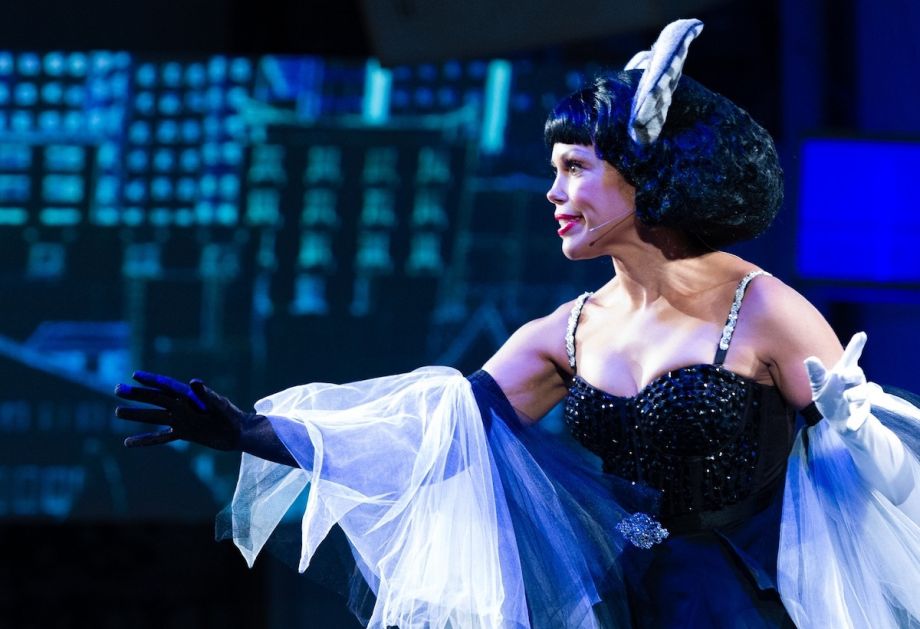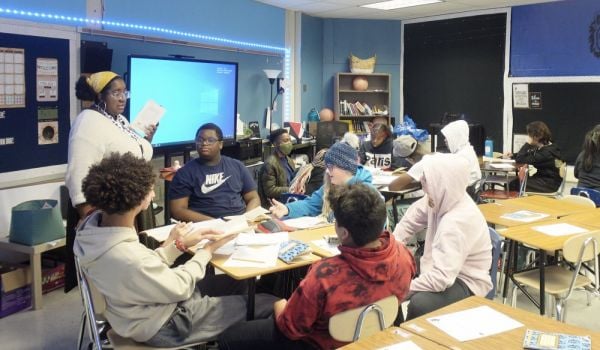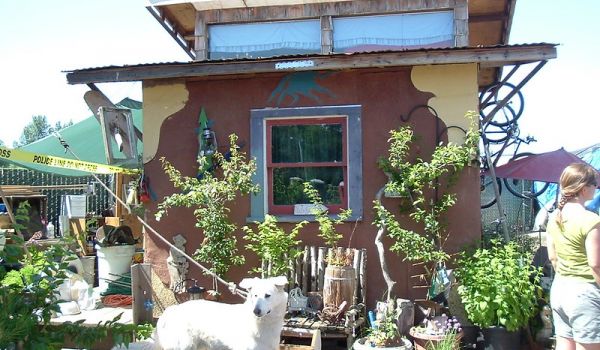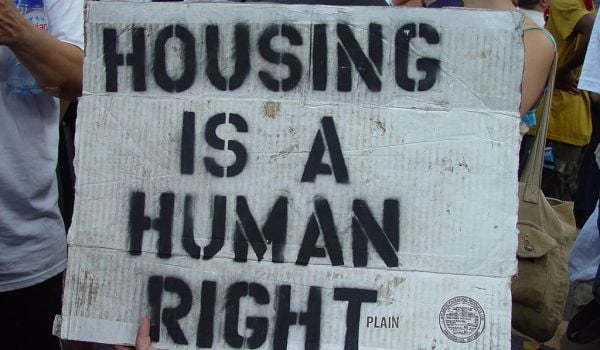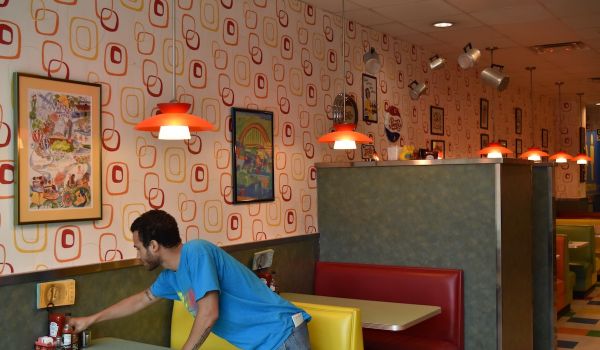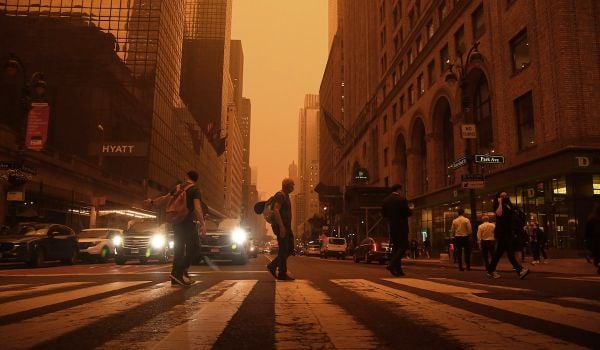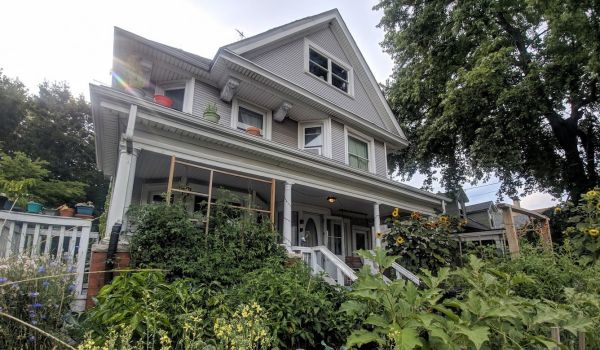As much as we need tangible solutions to the growing housing crisis, we also need experiences that build empathy for the people suffering most. As a teacher and practitioner of community-based performance, I believe theater can be a vehicle for strengthening personal connections across economic circumstances. In fact, I’ve seen it with my own eyes.
Last year, Touchstone Theatre brought “The Most Beautiful Home…Maybe” to Pennsylvania’s Lehigh Valley. The project, devised by theatrical duo Mark Valdez and ashley sparks, also known as Mark-n-Sparks, explores how theater can contribute to local equitable housing efforts.
“Art and story have the power to build empathy and understanding,” the duo says. “Our process and performance place those most impacted proximate to those with the power to affect change, so that we can truly start to see one another.” It is that capacity to concretely connect people to one another that theater brings to the housing challenge.
Just hear how the mayor of Bethlehem, Pennsylvania, was moved by a performance of the play in his city: “We’ve never seen anything like our housing crisis now. The Bethlehem I grew up with, which always welcomed people, giving steelworkers and others an opportunity, does not exist anymore,” Mayor Willie Reynolds reflected in remarks after the performance.
“Now it can’t be just that we or our family are happy or our kids are set,” he said. “We must create that opportunity for others, through the hard work that everyone’s doing and through listening to the message and experiencing the interconnectedness like the people at Touchstone Theatre created in this show.”
Mark-n-Sparks’ experiment has unfolded in five different cities to date, each time combining the production of a scripted play about the housing crisis adapted to the host city with interactive events co-created with local housing activists.
At the heart of the experience is serious community engagement, both in the play and in auxiliary events. The show relies heavily on actors who also facilitate audience participation. Addressing spectators directly, they invite housing stories and playfully test their knowledge of housing terms and history. The performance isn’t about teaching but is rather a rigorous group discussion. They want the audience to engage emotionally and intellectually, and to use their imagination — for ultimately, we must imagine what more equitable housing would look like in order to attain it. The key to this project’s success, and what distinguishes it from both a typical play or a traditional community planning forum, are these multiple opportunities to interact.
To look at only what exists is dire. The housing crisis in Bethlehem and the Lehigh Valley mirrors much of the country. For every 100 “extremely” low-income families, only 30 housing units are affordable and available to Lehigh Valley residents. One-third of Lehigh Valley households are cost-burdened, meaning they pay more than 30% of gross income on housing costs. Lehigh Valley is among the most competitive small rental markets in the U.S. – the second-most, per one source. The risk of housing loss has only increased because of pandemic-related job loss.
Groundwork
The project in Pennsylvania’s Lehigh Valley unfolded intermittently between September 2022 and September 2023. And it took a full cast of characters to make it happen.
First, local liaison Mary Wright from Touchstone Theatre — which has operated in Bethlehem for over 40 years — identified local housing activists from health, government, higher education, community-based organizations, veterans groups and churches to participate. Building this network was possible because she already knew so many locals through the theater’s shows, youth programs, community events and day-to-day encounters typical of small-town life.
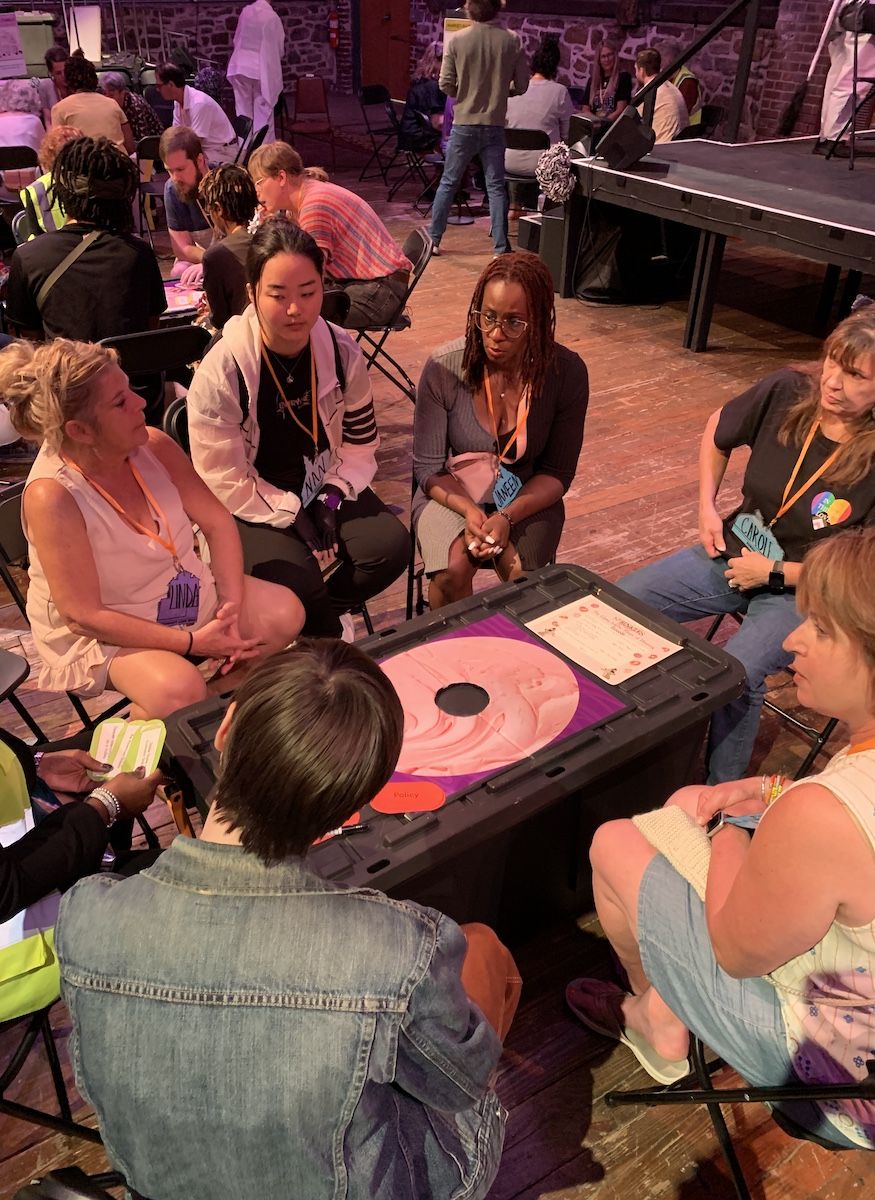
(Photo by Graham Burrell)
Then, five to eight people at a time sat in a circle for 60 to 90 minutes, each sharing personal stories in response to Valdez’s prompts. The first: Where do you consider home and why? Each person responded through a three-minute story as the others listened, opening up to share feelings and facts, connecting the people in the circle to home and housing, their own needs and those of others. Participants experienced each other as individuals with yearnings about home, values regarding community, and ambivalence about change. While multiple points of view about housing are embedded in the stories, no one can argue with someone’s personal experience. This connected people with their own and each other’s personal experiences around housing.
Then Valdez linked individual experiences to collective history by directing participants with a new prompt: Tell the housing story of your community. Participants described Bethlehem as a place where diverse people came to build a life, notably immigrants to work in the dominant industry, Bethlehem Steel. Anna Smith, director of Community Action Development Bethlehem, described her economically modest neighborhood, where landlords who lived nearby could be reached when a tenant needed repairs. Now most landlords are corporate and based elsewhere, with no personal connections or local accountability, she explained. Given the market in student housing, landlords have options. The Steel has closed and Smith’s neighborhood has fast been gentrifying.
Valdez’s next prompt asked: Where do you see possibilities? Numerous advocates have remarked that “The Most Beautiful Home…Maybe” brings back a missing ingredient to housing efforts: imagination. Our thinking gets smaller when it is focused on policies that can get passed. Making a moment to envision is nourishing.
An interactive Community Future Forum
Then sparks partnered with three local housing professionals — Smith, executive director of the Lehigh Council of Churches Abby Goldfarb, and Bethlehem’s Deputy Director of Community Development Sara Satullo — to plan an auxiliary activity.
Touchstone liaison Mary Wright had noted that she knew of no effort to articulate a shared vision across organizations about the future of housing. That became the forum focus. Goldfarb added that getting away from the day-to-day details and dream was her favorite part of the process. Housing planning commissions do long-term projects, but they rely on experts, not broad public inclusion.
Over 70 people from across Lehigh Valley’s rural, suburban and urban geographies attended a six-hour forum, envisioning a 2050 where no one is unhoused. Through interactive and story-driven facilitation, sparks created space for locals to engage with each other and housing leaders. It was a striking contrast to the way experts speak at locals in community meetings. Attendees heard a range of viewpoints from the round table where eight people sat, the speakers shifting each time a new topic was introduced.
Civic engagement was also integrated into the event; Satullo gave a Zoning and Planning 101 presentation to help everyone understand the basics of how government approaches housing development. Participants created a human timeline based on how long they’ve lived in the Valley. They took deep breaths together. They discussed how equitable housing is supported or inhibited by values, beliefs, policies, and imagination. Money, they learned together, is only part of the solution.
The production
The show was performed by local actors four times, two weeks later. It’s a time-traveling, playful, immersive and interactive experience that draws on popular culture to communicate housing-related facts, fears, future fabulations and stories of Americans facing home insecurity.
Spectators who arrived weren’t just part of the audience: They received name tags and were called on by name throughout the experience. They immediately learned a line dance, taking them into their entire bodies and requiring them to let go of how they looked — and just engage. They moved around for the first half of the 90-minute show, shifting with the play’s action to any of the five surrounding stages. They saw each other as much as they saw the actors.
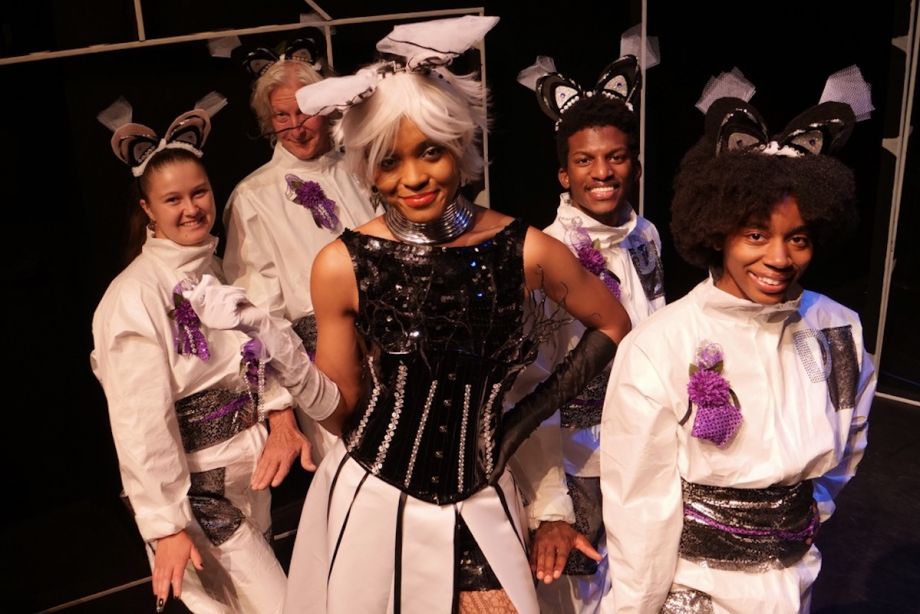
(Photo by Christopher Shorr)
The play’s basic framework is customized and shaped around the particulars of each place that hosts “The Most Beautiful Home…Maybe,” reflecting communities back to themselves. Each iteration features local success stories; in Lehigh Valley, a local Latina leader who was a single parent in a rental described taking a class about home ownership and subsequently buying a home. Each production includes life expectancy data that highlights the largest discrepancy between neighborhoods; in Bethlehem, that’s a 14-year gap.
The characters spoke and dressed like humans, but were zebra-esque with animal ears and movements — hands up, elbows bent in front of their chests. Valdez and sparks wanted the characters to be animals to immediately catapult spectators into an imaginative space. The main character was a glamorous cabaret singer with a fabulous black-and-white wardrobe. Tumultuous songs (e.g., “Surabaya Johnny,” “Mississippi Goddam”) integrated emotional expression with housing challenges.
Actor Bill George, Touchstone’s founder and a well-known local performer, spoke to the audience in character as an elder with dementia who was selling his home to pay for his care. Then George broke the theatrical frame and shared his own personal story: If he or his wife should ever face a major health problem, they’ll lose their beloved home and land. This fluidity between the imaginary and the real brought home the sobering outlook for housing for the elderly.
Audience participation took a particularly creative turn when spectators were divided into small groups to play a game. Through discussion and mutual agreement, they selected or created one marker – playfully called a “sprinkle” – to decorate a gameboard. Each marker represented different categories like values or policy; policies were based on current local legislative initiatives and the values were generated from the community forum. Each marker reflected the solutions or actions that each group decided to prioritize. The goal of the game was to have a conversation grounded in local policy actions and collectively imagine what it will take to create a “beautiful housing future.”

Lehigh River mural designed by Zoë Miller (Photo by Zoë Miller)
And beyond?
Theater characteristically creates images that reinforce dominant themes. At the forum, the image of the Lehigh River flowing throughout the valley was central. Participants wrote responses to various aspects of housing: obstacles were inscribed on paper shaped like sticks that impeding the river’s smooth flow, values were written on paper shaped like the rock along the banks, and so forth. This data was affixed to a large mural of the river.
Students in a community-based participatory research course at local Lehigh University took this data, analyzed it, and created a zine (still under construction) for community partners to use as a dialogue guide to talk about the future of housing. Their professor, Kate Jackson, is in conversation with local housing activists to disperse it at their events.
As student Grace Rosevear puts it, the project “taught me that in order to start creating solutions to problems like the housing crisis in the Lehigh Valley, it takes everyone to get involved, meaning not just interventions by researchers and policymakers, but involvement from other voices within the community who are actively living this reality.”
Touchstone’s Mary Wright is also in communication with Valdez and sparks about featuring the third piece in their housing trilogy – “Housewarming,” about the impact of climate migration on housing – in the theater’s 2025 festival.
A river is to a community as veins and arteries are to a human body, connecting and nourishing all parts. “The Most Beautiful Home…Maybe” contributes a tangible way to build community connectedness in the fight for more equitable housing. The immersive theater project brought locals an experience of one another as more than their public selves, touching their deeper waters such that no one will be all right until all have decent homes in this wide, wide world.
Jan Cohen-Cruz was an evaluator for New York City's Public Artists in Residence program. Her and Pam Korza’s research on artist-municipal partnerships is the basis for the website ‘municipal-artist.’ Jan writes extensively about socially engaged performance including books on street theater, August Boal, and most recently, with Rad Pereira, Meeting the Moment: Socially Engaged Performance, 1965-2020, by Those Who Lived It.

